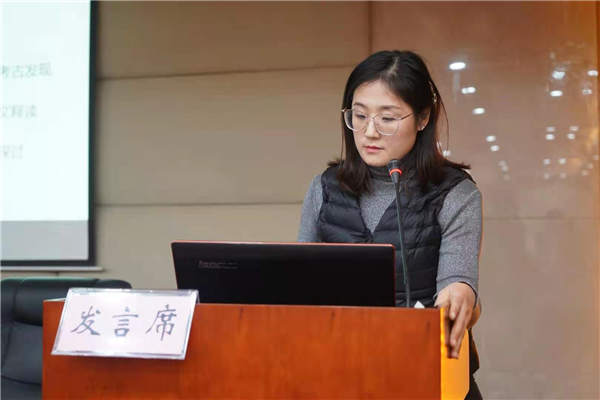

"But I had expertise and official license to lead excavation as well," Yan says. "I don't think there should be such a differentiation."
Cooperating with her male colleagues to unearth a myriad relics all over Chongqing throughout the next decade, the highlight of Yan's career arrived in 2017, when she and four other female archaeologists were assigned to independently host an excavation in Pingshang archaeological site, Zhongxian county.
Covering an area of 82,400 square kilometers, Chongqing is like a miniature province. However, absence of prefecture-level government within the city means that almost all county-level archaeological work has to be directly taken care of by her institution, which is on par with a provincial-level academy.
"We were overwhelmed by many follow-up archaeological projects related to the reservoir area," Bai Jiujiang, director of Chongqing Cultural Heritage Research Institute, recalls.
"Many colleagues are stationed in the field for over 300 days a year," he explains, adding: "We have to send our female researchers to the front line."
At Pingshang site, a tomb complex lasting from the Han Dynasty (206 BC-AD 220) to the Southern Dynasty (420-589) was unearthed, offering key references in studies of craftsmanship and burial customs during that period.
The archaeologists had to take boat to reach the site every day.
"We lived in the homes of nearby villagers, and ran against the rising water of the Yangtze River," Yan recalls. "It's not easy, but it's our job."
The finding was listed among the "top six archaeological discoveries in Chongqing" of 2017. Due to their remarkable achievement, this temporarily-assembled team became an established crew. The all-female archaeological team was set up in 2018.
By 2019, the team had independently taken on 12 excavation projects and published more than 20 academic papers, including five in core journals.
In October, the team was bestowed with the title of National March 8th Red-Banner Collective by the All-China Women's Federation, which is one of the highest honors for excellence that Chinese women can be awarded.
For Yan, leading the team has opened the door to many new challenges.
For example, one task is to recruit local villagers as their assistants when digging the pits, as well as for other tasks. Though it seems a good way to benefit local community in countryside by providing extra income, Yan says winning trust takes time.
"At first, many refused to believe that several women could be real archaeologists," Yan says. "Some people thought we were frauds."
Compared with her male colleagues, who can quickly make friends with villagers by proffering cigarettes or taking a drink together, it is more difficult for Yan to get accustomed to that atmosphere.
"But time is the best test," Yan says proudly. "Seeing our persistence and hard work on the site, many people offer a hand. It needs patience, and we have that."
They also employ other methods to build friendships and trust. Wherever they launch an excavation, they often bring some old toys, books and clothes that they donate to the children of poor families in local villages.
However, sometimes, the love toward their own children is not fully expressed, especially if that love equates to being by their side.